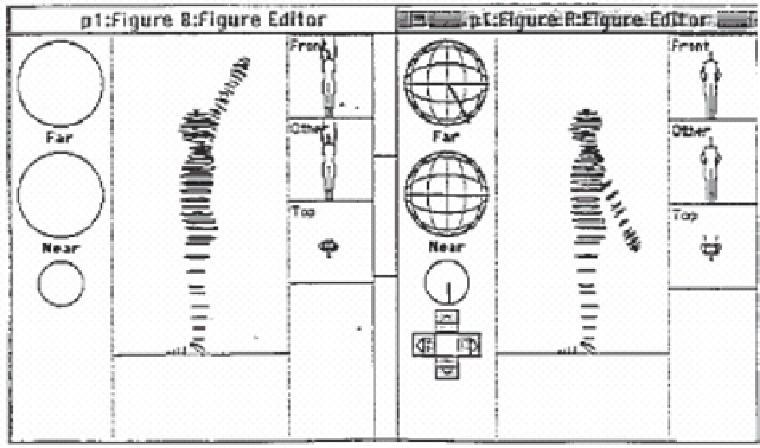Database Reference
In-Depth Information
the case of the arm in Figure 9, which changes its position in the absolute space, due to
movement of the forearm over the shoulder. Here, the forearm moves while the arm is just
dragged, without changing the internal geometric relation with the adjacent link, i.e., with
the forearm.
Intermediate Position
The key frames approach “moves” the creature's limbs along the shortest route between
any two sequential positions. Thus, in addition to extreme positions, we are bound to defi ne
every
intermediate position
that contributes to the goal of directing the system along the
desired path of motion.
Consider for example an upward movement of the forearm of more than 180 degrees
along the vertical axis, beginning behind the back and ending behind the head (Figure 9).
Using the key frames approach, we need to represent this movement by means of at least
three positions. Describing it by means of the two extreme positions only would cause the
animation to fl ow in the opposite direction, using the
shortest path
. In other words, the
hand would be raised from behind the back, instead of the front!
In addition, the key frames approach requires an
intermediate position
of the
whole
image,
not only in order to direct the movement through the right path (as discussed above),
but also in the following cases:
During the course of movements carried out at varying velocities with respect to dif-
ferent sections.
•
During the course of movements in which there is a beginning or ending of move-
ment by any of the limbs involved to allow timing of the movements of the various
limbs.
•
Figure 9: Intermediate position

